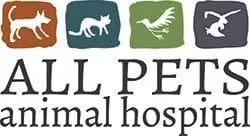Can Your Vet Visits Be Less Fearful
Does your pet like going to the vet? Studies (and experience) say that the likely answer to that is a resounding “no!” According to a recent study by Bayer Healthcare, 37% of dog owners and 58% of cat owners say that their pets hate gong to the vet. Many of those owners say that just thinking about veterinary visits is stressful.
Many pet parents further report that the reason they don’t take their pets to the vet is that they’re worried about their pet’s fear and stress level.
We also know that stress can have a detrimental effect on the body. Stress released chemicals can cause or speed up disease processes and may even cause permanent neurologic changes. We know that anxieties can get worse if untreated, so it is important to do what we can to slow the reaction or alleviate the source of fear.
Causes of Fear
Fear in all animals is a natural response to individuals, objects and situations they feel are threatening. Note that the source does not have to actually be a threat, the animal merely has to believe that it is. The causes of fear can vary from genetic predisposition to traumatic experience, but regardless of cause the result is the same: a distressed pet and a stress-out owner.
Signs of Fear
Pets show fear in a variety of ways. Milder signs may include lip licking, yawning, floor sniffing (dogs), crouching/huddling and hiding. More serious signs can include growling/hissing, scratching, and biting. These signs are part of the animal’s “fight or flight” response system and are usually not signs of aggression; they are reactions to fear.
What We are Doing to Help
 We know that veterinary visits are stressful to our pets. While veterinary professionals always aim to make pets feel better, an
unfortunate side effect of all the relative strangers examining, poking, and prodding is fear in our patients.
We know that veterinary visits are stressful to our pets. While veterinary professionals always aim to make pets feel better, an
unfortunate side effect of all the relative strangers examining, poking, and prodding is fear in our patients.
All Pets Animal Hospital is implementing elements of the veterinary hospital Fear Free Initiative, aimed at decreasing veterinary visit stress or even helping pets look forward to their visits with us. While we are resigned to the fact that most pets will never be thrilled to see us, any amount of fear that we can alleviate is beneficial for the pet, the owner and for us.
Pheromones
Pheromones are chemical signals passed on by all animals to send information to others of the same species. All animals put off “calming” pheromones that subconsciously let others know
that an area is safe. There are now products on the market that put off these calming pheromone signals to help relax animals who nearby to receive them.
 Diffusers: Next time you visit, you may notice plug-in
diffusers in our exam rooms. These diffusers are letting off the calming pheromone products Feliway (cats) and Adaptil (dogs)
into the room to help dog and cat patients feel more relaxed while in those rooms.
Diffusers: Next time you visit, you may notice plug-in
diffusers in our exam rooms. These diffusers are letting off the calming pheromone products Feliway (cats) and Adaptil (dogs)
into the room to help dog and cat patients feel more relaxed while in those rooms.
We also have these diffusers in our dog and cat wards, our treatment room, and our waiting room.
Sprays: We use these same pheromones in spray form to cover surfaces that our patients contact. Our staff sprays their clothing, patient exam towels, cages and even our Thundershirtanxiety jackets (see below) to make sure that our patients get maximum exposure to the calming effects.
Calming Towels in the Lobby: We also have pheromone-laced towels in our lobby for our fearful felines. Next time you and your cat are in to visit, feel free to borrow one of our pheromone towels to cover the cat’s carrier. Not only does this provide a visual barrier against the activity of the lobby, but these towels are sprayed with Feliway to help bring a feeling of calm.
Treats
Food makes a lot of things better and for pets that’s especially true. If we associate veterinary visits and treatments with especially tasty food (“high value treats”) the pet learns
to think of the clinic as a place to get special treats instead of a place to get shots. Some pets even learn to look forward to the veterinary visit!
If appropriate (barring allergies or anesthesia), we give pets extra special treats at several points in the hospital. We have these treats up front and at our dog scale. We also give them these tasty morsels in the rooms, in the back/treatment area and any time that we perform a procedure involving a needle.
Thundershirts
Thundershirts were designed to provide gentle constant pressure to help bring a feeling of calm to fearful dogs & cats, similar to the calm experienced by a swaddled infant. Studies
have shown that dogs or cats show physiological signs of stress reduction while wearing these jackets (based on blood pressure and heart rate).
We use these jackets on our patients as they wake from anesthesia or any time they are staying in the hospital and are showing signs of stress. Additionally, we spray these jackets with calming pheromones for extra stress-reducing effects.
What You Can Do At Home
Fear Free vet visits actually can begin at home. A calm, positive car ride and positive reinforcement at the clinic can help a pet feel happier and more comfortable. Dog trainers often say that an owner’s emotions “travel down the leash,” meaning the dog reacts to their owner’s level of stress or relaxation. The same is often true at the vet. Calm, happy owners can help their pets feel calm and happy. You can also try these techniques:
You can use pheromones too!
Calming pheromones can start at home. If your pet uses a carrier, spray the carrier and padding with the appropriate pheromone (available at our clinic). You can spray the car
seats, collars (Adaptil is available in a collar form as well), and any other porus surface your pet is exposed to.
Love your carrier
Most pets actually don’t want to be social when they’re in a stressful situation. Cats especially prefer a place to hide. Keep your pets in their carriers in the car and at the
vet, and cover those carriers with a towel or blanket (pheromone sprayed, of course) to provide a visual barrier. Additionally, while in the car, try to restrain your carrier to prevent
it from moving too much in travel (placing the carrier on the floor of the car may prevent it from rocking on the seats). Finally, once in the clinic, keep your carrier on a bench or
shelf and don’t attempt to “introduce” your worried pet to other animals. Keep them covered until it is time for the exam.
A note on carriers: Cats and dogs don’t like to be dragged out of carriers. The ideal carrier for your pets is one that can easily be disassembled to remove the top. Often, we can simply examine the cat while they sit in the base of the carrier, which can help minimize stress.
Respect Other Pets’ Space:
Don’t allow or ask your pet to greet other animals in the lobby. Not only can this increase other patients’ stress, your own pet may not appreciate the interaction. Even normally
gregarious animals may be less social when in a stressful situation such as the veterinary clinic. Forcing them to be social can lead to more fearful or even aggressive behavior.
BYOT (Bring Your Own Treats):
When taking your pet anywhere stressful, bring a good supply of extra-special treats. Look for stuff that really drives your pet wild, such as chopped chicken, hot dogs, liver, cheese,
etc. As soon as your pet gets out of the car, start rewarding. Continue to do so when you enter the lobby, step on the scale, enter the exam room, etc. Ask staff members to
offer your special treats, too. We love making pets happy!
Cats can be especially prone to stress at vet visits. For more information on decreasing your feline’s anxiety when they visit the vet, read our article on Minimizing Stress When Taking Your Cat to the Vet:
[Link] http://allpetsanimal.com/topics/minimizing-stress-when-taking-your-cat-to-the-vet.html?_ga=1.94798751.2004444993.1453922944



